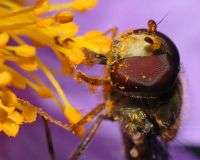Nothing to sneeze at: Real-time pollen forecasts

Researchers in Germany are reporting an advance toward development of technology that could make life easier for millions of people allergic to plant pollen. It could underpin the first automated, real-time systems for identifying specific kinds of allergy-inducing plant pollen circulating in the air. Their study is in the current issue of ACS' Analytical Chemistry.
In the study, Janina Kneipp and colleagues explain that current pollen counts and allergy warnings are based on visual identification of the specific kind of pollen by examining pollen grains under a microscope. That procedure takes time, making it impossible for allergy-sufferers to know the kinds of pollen that are airborne on an hour-by-hour basis.
The researchers describe using a common laboratory procedure to identify chemical structures in pollen grains that distinguish oak and maple pollen, for instance, from maple and other kinds. They obtained these chemical "signatures" for 15 different kinds of tree pollen with the procedure, termed Raman spectroscopy. The researchers say that it could provide the basis for a real-time pollen detection and warning system to help allergy sufferers.
Article: "Chemical Characterization and Classification of Pollen", pubs.acs.org/stoken/presspac/p … ll/10.1021/ac801791a
Source: ACS





















